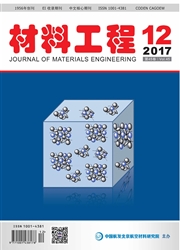

 中文摘要:
中文摘要:
采用光学显微镜、扫描电子显微镜和透射电子显微镜等方法,研究了Fe和si杂质对Al一Zn—Mg—Cu合金淬火敏感性的影响。结果表明:杂质含量的增加降低了合金的淬火敏感性,用硬度表征时最大降低3.29%。随杂质Fe和si含量的增加,Al7Cu2Fe相和Mg2Si相含量明显增加,消耗了基体中的Cu和Mg原子,合金的过饱和度降低,从而引起合金淬火敏感性的降低;同时粗大的Al7Cu2Fe相和MgzSi相有利于再结晶核心的形成,增加了合金的再结晶晶粒和(亚)晶界数目,促进慢速淬火过程中η平衡相的析出。过饱和度对合金淬火敏感性的影响大于晶粒结构对合金淬火敏感性的影响。
 英文摘要:
英文摘要:
The influence of Fe and Si impurities was investigated quenching by means of end-quenching tests,and microstructure analysis including optical microscopy (OM), scanning electron microscopy (SEM) and transmission electron microscopy (TEM). Results show that the addition of Fe and Si im- purities leads to lower quench sensitivity, decreasing by 3.29% in maximum when characterize by hardness. With increasing the content of Fe and Si impurities, Air Cu2 Fe phase and Mg2 Si phase con- tent increased significantly, thus reducing the solutes concentration of Cu and Mg elements in the ma- trix,reducing the degree of supersaturation, which leads to lower quench sensitivity. AlrCuzFe phases and Mgz Si phases are favorable for recrystallization, but bad for the reducing quench sensitivity. This is attributed to the higher amount of the recrystallization grains and (sub)grain boundaries, which re- sult in more heterogeneous precipitation of η equilibrium phases during slow quenching. The influence of supersaturation on quench sensitivity is bigger than that of grain structures.
 同期刊论文项目
同期刊论文项目
 同项目期刊论文
同项目期刊论文
 期刊信息
期刊信息
